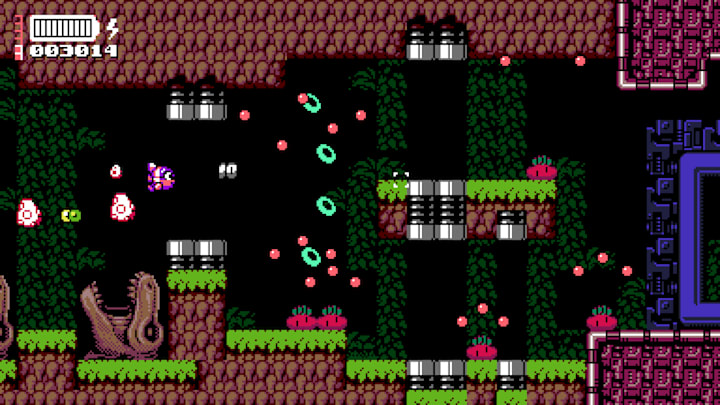UFO 50 review: 50 games with alien concepts

UFO 50 tries to emulate the games that founded the industry. Based on all the trappings that we remember from the ‘80s, a star-studded cast of indie developers headed by Spelunky’s Derek Yu have made a collection of 50 games based in an 8-bit style and rolled them all into one unique package under the fake studio UFOsoft. The problem is that while we think we love those ‘80s games, by today’s standards, they are almost unplayable, not only because of their brutal difficulty, but because, for the most part, they were pretty bad.
Nostalgia has blinded us to this fact. When we think of the ‘80s, we think of Mega Man, Mother, and Final Fantasy, but these games have endured because of their high quality. In reality, the ‘80s were full of stinkers that 99% of today’s gamers couldn’t play for more than a minute. In fact, gamers in the ‘80s weren’t particularly willing to put up with how obscure the gameplay mechanics of the day were. In 1982, the gaming industry was almost obliterated by E.T., who was then buried in the desert under concrete for their crimes.
It’s a difficult feat creating a game that feels like the ‘80s, but is actually not at all like the ‘80s, and then doing it 49 more times. As you might expect, UFO 50 manages this to varying degrees. One of the uniting threads throughout the games is that they often don’t tell you what to do. You can look at the controls, but this only solves part of the puzzle. Games in the ‘80s used to come with expansive manuals that explained everything that the game couldn’t due to its limitations. A famous example of this is the manual for The Legend of Zelda, which gives necessary information like “Pols Voice hates loud noises” or “Tenth enemy has the bomb”. UFO 50 doesn’t have manuals (unless they’re in the Terminal, the purpose of which I never figured out) and I think that’s its biggest weakness.
At the same time it’s the mystery running throughout the games which gives them their intrigue. You can see your completion level for each game on the game selection screen, giving you some indication of the direction you should be going in. This level of obscurity is what will inevitably link the games community together, giving that old-school feel of going to your mate’s house to discover how to get past a certain level in each game. It’s something which many games are missing out on these days, as signposting becomes better, and most people are only left searching for collectibles.
I played UFO 50 with Yu at Summer Game Fest, where he told me that he had no expectations when it came to how fans should play the game. Whether you try a few at random, or solidly attempt to complete just one is completely up to you how you approach it. However, this is my job, and I felt that I should at least give every game a go before writing this, and when you want to try out 50 different games, it doesn’t take very long before you give up on trying to understand one. I gave games like Mooncat and Golfaria 15 minutes of my time, without any sense of how to proceed. Then there were the games I just found a bit difficult, like Onion Delivery, that I’d just give up on pretty quickly.
This wasn’t the case for every game in the collection. I was determined to finish Porgy soon after I started the underwater metroidvania, but when I realized I’d spent about eight hours doing so, others weren’t given the same grace. I completed a sizable chunk of Block Koala, Camouflage, WarpTank, Vainger, Rock On! Island, Hyper Contender, Night Manor and Party House before I decided I had to move on. This is obviously a me problem, and the average consumer should be heavily impressed with just how much bang they get for their buck depending on what the price eventually is.
This is one of the hardest games I’ve ever had to review, and not only because I spent 40 hours playing it and felt I had only just scratched the surface. It’s a game that’s meant to be discussed. The mystery of games like Mooncat, Divers and the curious Terminal continues to confound me, and I can’t wait to see people inevitably figure it all out hours after launch. However, the way that the collection spans so many genres while still feeling cohesively linked is impressive, and I cannot wait for launch to uncover all the parts I couldn’t possibly figure out for myself.
Score: 9/10
Version tested: PC via Steam Deck
